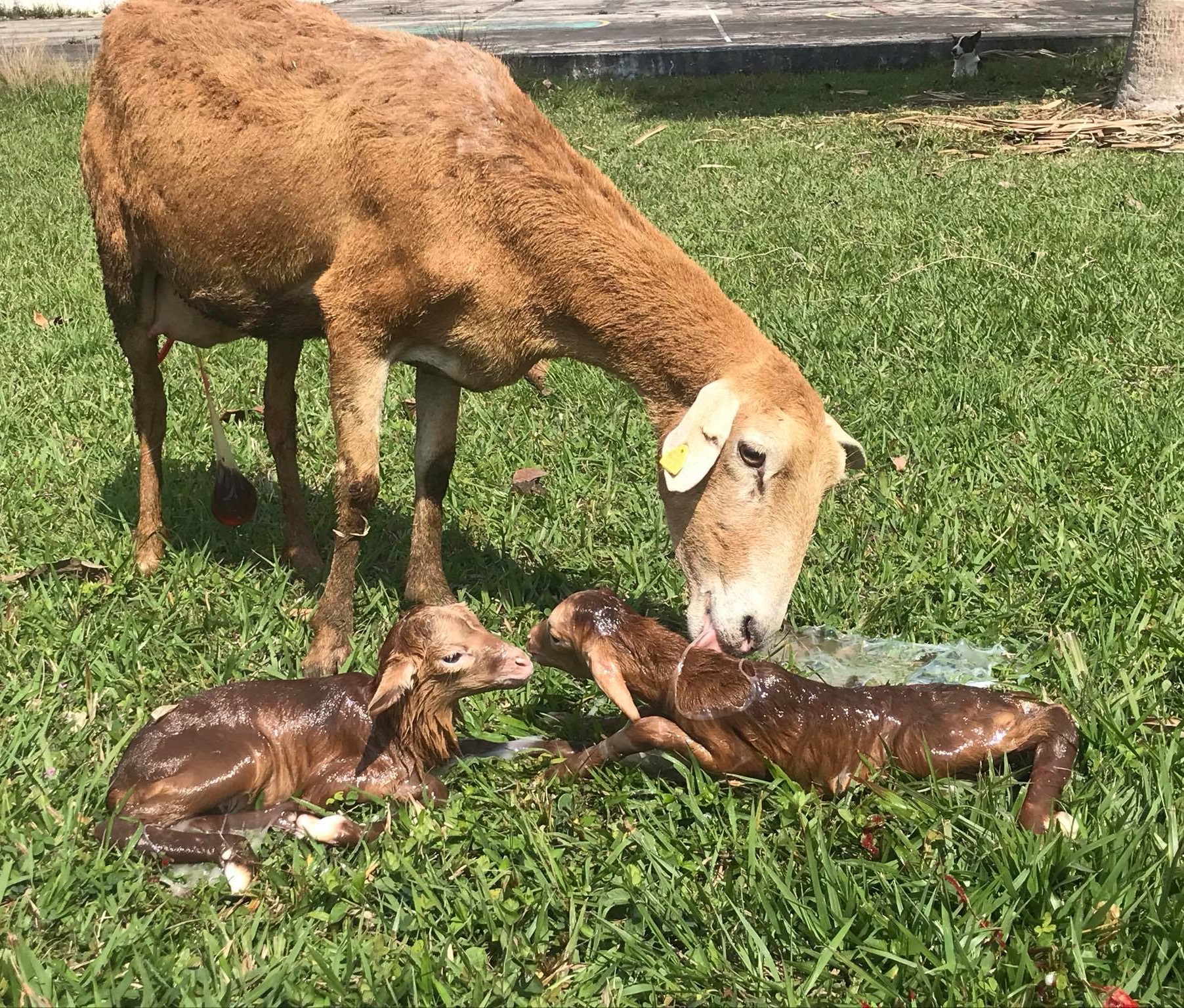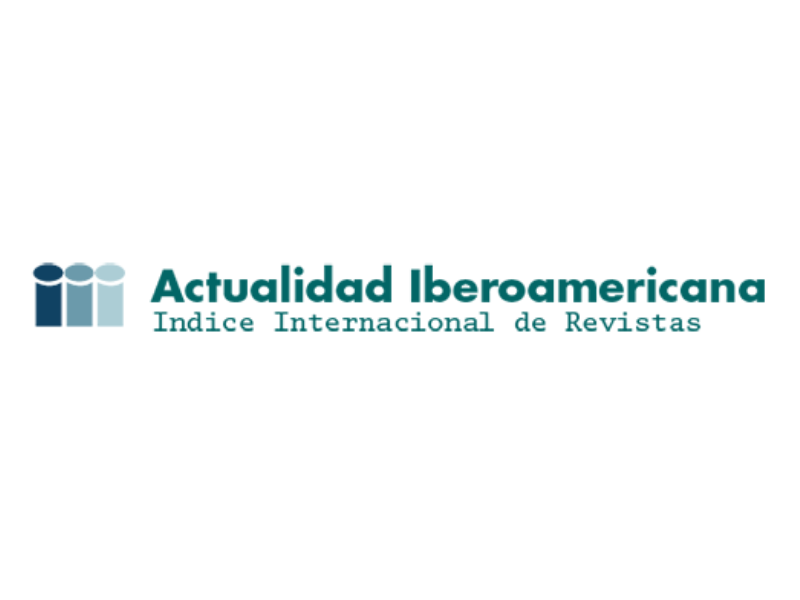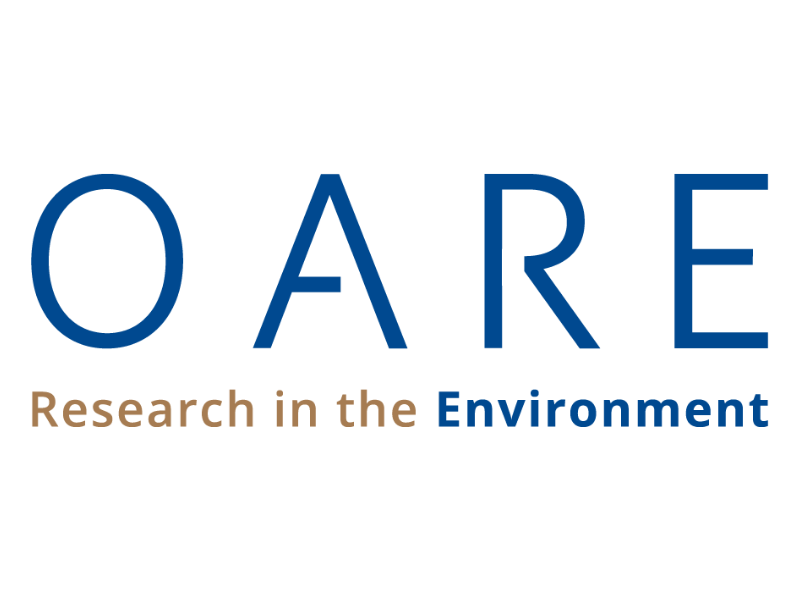Administration of lutropin (r-hLH) in the ovulatory and embryonic response in Pelibuey sheep
Administración de lutropina (r-hLH) y su respuesta en la tasa ovulatoria y embriones viables en ovejas Pelibuey

This work is licensed under a Creative Commons Attribution-NonCommercial-ShareAlike 4.0 International License.
Show authors biography
Objective. To evaluate the influence of lutropin alfa (recombinant human LH, r-hLH) administered at 12 and 24 h post-progesterone device removal (CIDR) on the response of hours to the onset of estrus, ovulatory rate, unfertilized oocytes, transferable embryos and plasmatic levels of LH, in a multiple ovulation protocol based on FSHp in Pelibuey sheep. Materials and methods. Eighteen sheep of Pelibuey sheep were used, which were randomly distributed into three treatments (n=6): T1 (200 mg FSHp-Folltropin®); T2 (200 mg pFSH + 75 IU r-hLH at 12 h post-CIDR withdrawal) and T3 (200 mg pFSH + 75 IU r-hLH at 24 h post-CIDR withdrawal). Results. Hours from start to estrus and ovulatory rate (OR) no significant differences were found. In unfertilized oocytes (UO) it was higher (p<0.05) in T2 (5.0 ± 2.3) compared to T1 (0.8 ± 0.6) and T3 (1.3 ± 0.7). The number of Quality 1 Embryos (Q1E) was higher (p<0.05) in T3 (3.1 ± 1.1) compared to T1 (1.1 ± 0.3) and T2 (0.6 ± 0.5) and for Transferable Embryos (TE) it was higher (p< 0.05) for T3 (6.6 ± 0.9) in relation to T2 (2.0 ± 1) and T1 (4.0 ± 0.6). Conclusions. The application of r-hLH 24 h after removing the CIDR increases plasma levels of LH, in effect, the number of unfertilized oocytes is reduced, and the number and quality of transferable embryos in Pelibuey sheep are improved.
Article visits 257 | PDF visits
Downloads
- Macías-Cruz U, López-Baca MA, Vicente R, Mejía A, Álvarez FD, Correa-Calderón A, et al. Effects of seasonal ambient heat stress (spring vs. summer) on physiological and metabolic variables in hair sheep located in an arid region. Int J Biometeorol. 2016; 60(8):1279–1286. https://doi.org/10.1007/s00484-015-1123-6
- Muñoz-García C, Vaquera-Huerta H, Gallegos-Sánchez J, Becerril-Pérez CM, Tarango-Arámbula LA, Bravo-Vinaja Á, et al. Influence of FecG E mutation on the reproductive variables of Pelibuey ewes in the anestrus period. Trop Anim Health Prod. 2021; 53(2):4–10. https://doi.org/10.1007/s11250-021-02755-7
- Moreira NH. Short protocol with progesterone-CIDR shows high ovulation synchrony and high fertility following artificial insemination in hair sheep. Research Square. 2023.https://doi.org/10.21203/rs.3.rs-2729531/v1
- Lagares M de A, Varago FC, Moustacas VS, Gheller VA, Nicolino RR, Borges I, et al. Effect of season and frequency of embryo collections on superovulatory response and embryo recovery in Santa Inês hair sheep. Small Rumin Res. 2021; 201:1-5. https://doi.org/10.1016/j.smallrumres.2021.106441
- Arashiro EKN, Pinto PHN, Lima JTM, Henry M, Ascoli FO, Souza-Fabjan JMG, et al. Three superovulation protocols for in vivo embryo production in Santa Inês sheep. Ciência Rural. 2022; 52(8):1-7. https://doi.org/10.1590/0103-8478cr20210308
- Oliveira MEF, Figueira LM, Fabjan JMGS, Fonseca JF da. New approaches to superovulation in goats and sheep. Rev Bras Reprodução Anim. 2021; 45(4):229–235. https://doi.org/10.21451/1809-3000.RBRA2021.029
- Martinez-Ros P, Astiz S, Garcia-Rosello E, Rios-Abellan A, Gonzalez-Bulnes A. Effects of short-term intravaginal progestagens on the onset and features of estrus, preovulatory LH surge and ovulation in sheep. Anim Reprod Sci. 2018; 197:317–323. https://doi.org/10.1016/j.anireprosci.2018.08.046
- D’Alessandro AG, Martemucci G, Taibi L. How the FSH/LH ratio and dose numbers in the p-FSH administration treatment regimen, and insemination schedule affect superovulatory response in ewes. Theriogenology. 2005; 63(6):1764–1774. https://doi.org/10.1016/j.theriogenology.2004.08.002
- Bartlewski PM, Seaton P, Franco Oliveira ME, Kridli RT, Murawski M, Schwarz T. Intrinsic determinants and predictors of superovulatory yields in sheep: Circulating concentrations of reproductive hormones, ovarian status, and antral follicular blood flow. Theriogenology. 2016; 86(1):130–143. http://dx.doi.org/10.1016/j.theriogenology.2016.04.024
- Endo N, Tamesaki C, Ohkura S, Wakabayashi Y, Matsui H, Tanaka A, et al. Differential changes in luteinizing hormone secretion after administration of the investigational metastin/kisspeptin analog TAK-683 in goats. Anim Reprod Sci. 2015; 159:87–93. http://dx.doi.org/10.1016/j.anireprosci.2015.05.016
- García-Salas A, Cortez-Romero C, Salazar-Ortiz J, Arroyo-Ledezma J, Ruíz-Vera VM, Vaquera-Huerta H, et al. Administration of exogenous hormones in ovulatory and embryonic response in Pelibuey sheep. Reprod Domest Anim. 2017; 52(3):446-451. https://doi.org/10.1111/rda.12930
- Perera-Marín G, Gutiérrez CG, Murcia C, León H, González-Padilla E. Progesterone and the distribution of pituitary gonadotropin isoforms in cattle. Anim Reprod Sci. 2008; 104(2–4):164–176. https://doi.org/10.1016/j.anireprosci.2007.02.015
- Ortega Á, Olivares A, Murcia C, Díaz D, González-Padilla E, Montero A, et al. Biological and immunological activity in bovine luteinizing hormone charge isoforms. Rev Mex Ciencias Pecu. 2016; 7(1):29–51. https://doi.org/10.22319/rmcp.v7i1.4148
- Figueira LM, Alves NG, Maia ALR e. S, Souza-Fabjan JMG de, Batista RITP, Morais MC da C, et al. Embryo yield and quality are associated with progestogen treatment during superovulation protocol in lactating Lacaune ewes. Theriogenology. 2020; 155:132–138. https://doi.org/10.1016/j.theriogenology.2020.06.004
- Kolling APML, Brilhante GC, Drechmer J, Santos LM, Silva BDM, Ramos AF. Relationship between superovulation and embryo production with ovarian follicular population before superovulatory treatment in Brazilian Bergamasca sheep. Arq Bras Med Vet e Zootec. 2021; 73(1):115–122. https://doi.org/10.1590/1678-4162-12105
- Forcada F, Amer-Meziane MA, Abecia JA, Maurel MC, Cebrián-Pérez JA, Muiño-Blanco T, et al. Repeated superovulation using a simplified FSH/eCG treatment for in vivo embryo production in sheep. Theriogenology. 2011; 75(4):769–776. http://dx.doi.org/10.1016/j.theriogenology.2010.10.019
- Simonetti L, Forcada F, Rivera OE, Carou N, Alberio RH, Abecia JA, et al. Simplified superovulatory treatments in Corriedale ewes. Anim Reprod Sci. 2008; 104(2–4):227–237. https://doi.org/10.1016/j.anireprosci.2007.01.020
- Salehi R, Kohram H, Towhidi A, Moakhar HK, Honarvar M. Follicular development and ovulation rate following different superovulatory treatments in Chall ewes. Small Rumin Res. 2010; 93(2–3):213–217. http://dx.doi.org/10.1016/j.smallrumres.2010.05.017
- Nikbakht K, Habibizad J, Meamar M. Effect of GnRH and hCG injection on the reproductive performance and serum progesterone concentration of ewes during spring season. Vet Res Forum. 2022; 13(4):553–561. https://doi.org/10.30466/vrf.2021.527306.3158
- Brasil OO, Moreira NH, Santos G, Silva BDM, Mariante AS, Ramos AF. Superovulatory and embryo yielding in sheep using increased exposure time to progesterone associated with a GnRH agonist. Small Rumin Res. 2016; 136:54–58. http://dx.doi.org/10.1016/j.smallrumres.2016.01.005
- Falchi L, Ledda S, Zedda MT. Embryo biotechnologies in sheep: Achievements and new improvements. Reprod Domest Anim. 2022; 57(Suppl. 5):22–33. https://doi.org/10.1111/rda.14127
- Saleh M, Holtz W. LH pattern and ovarian response in ovsynch-synchronized superovulated goats induced to ovulate with GnRH or hCG. Theriogenology. 2022; 185:61–69. https://doi.org/10.1016/j.theriogenology.2022.03.020
























